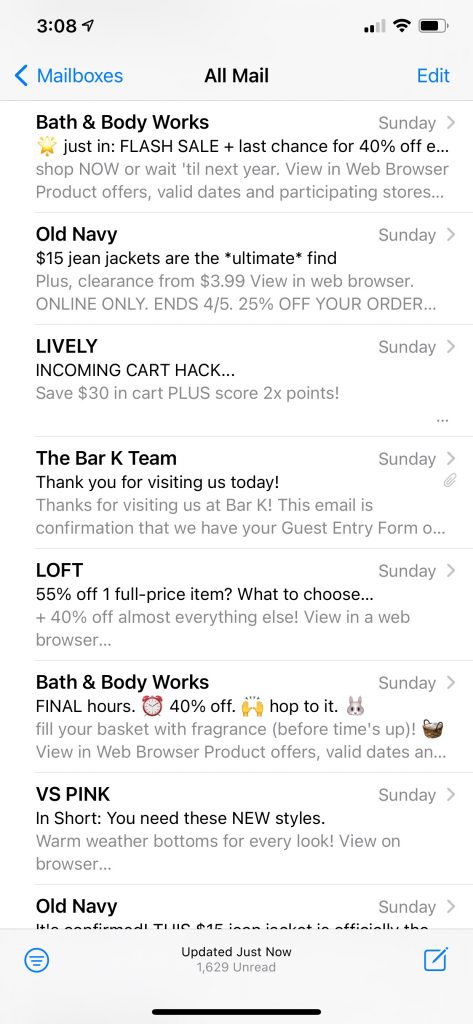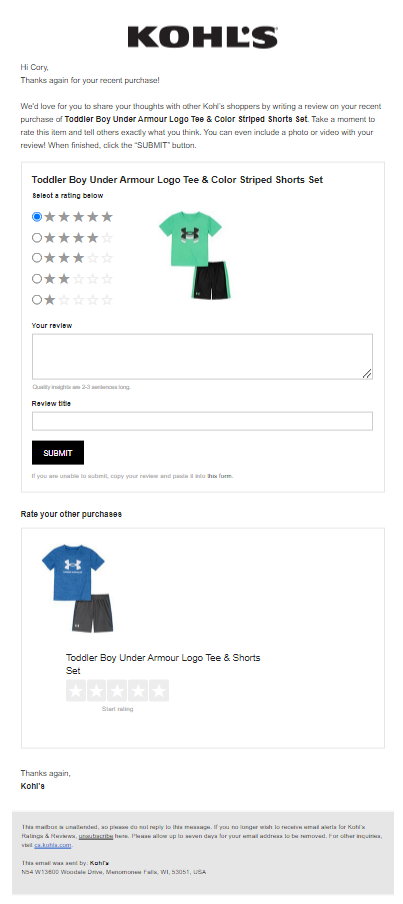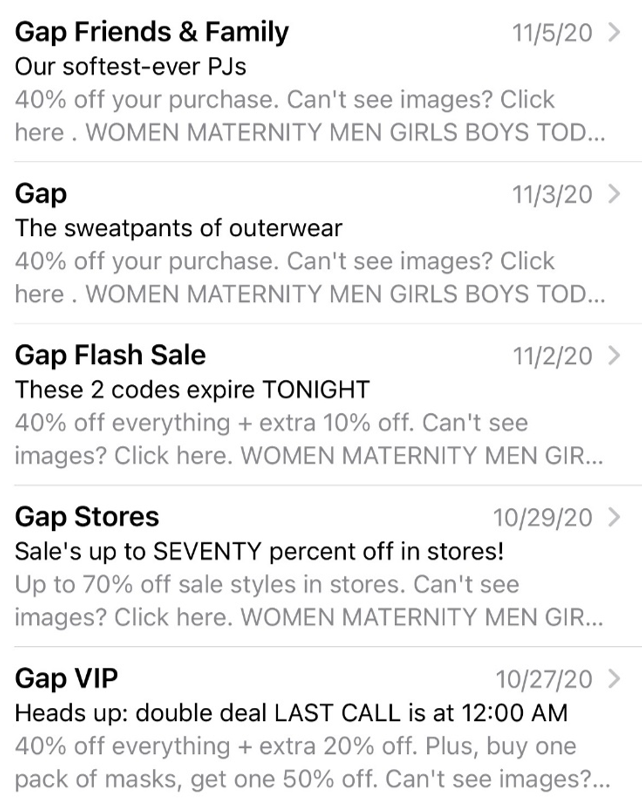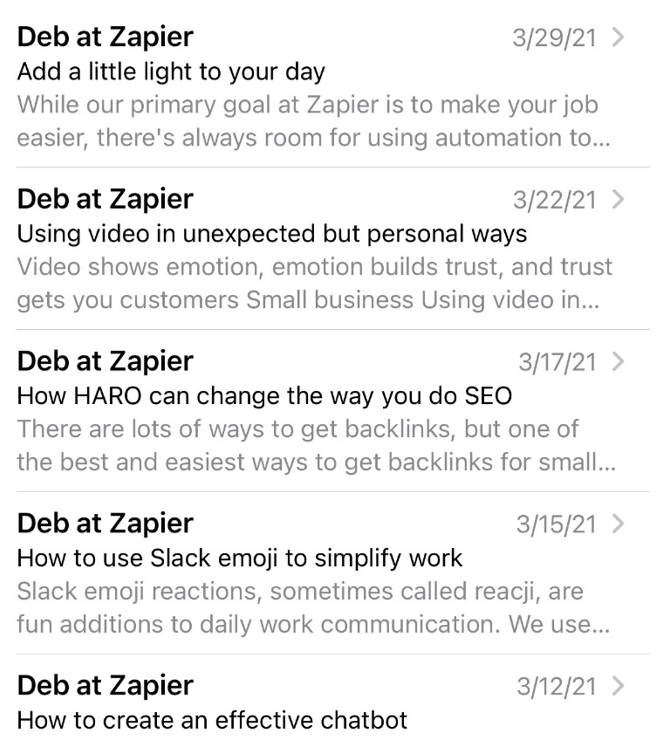Composing the perfect email is about so much more than a snappy subject line and clever call-to-action. With the constant barrage of marketing emails being sent daily, the inbox has become valuable real estate! As a marketer, all you can hope for (at the very least) is that your recipients open your email, but you may need to do more to entice them—like be more mindful of who the email looks like it’s coming from. Did you know that more than half of email users pay attention to the from name when deciding whether to open an email (FreshAddress)? And I know what you’re thinking—the from name is a small part of a much bigger picture. But when you take into consideration that most people are checking their email on a mobile device and that the from name tends to be much more prominent in mobile email clients, it doesn’t seem so small anymore. Take the Apple Mail app for example:

The from name is the first thing a recipient sees, in bold, front and center. So how do you grab their attention and prevent them from swiping left? Let’s take a look at what’s in a from name:
From: noreply@companyname.com

We’ve all seen it in our inbox—the “do not reply” and faux pas of from names. It sends a clear message—that you are not interested in interacting with your email base. You may be wondering when it’s appropriate to use a “no reply” email address in the from name and the answer is never. Take the email in question for example:

Kohl’s is asking Cory for feedback on his recent purchase, which is fine. But maybe Cory has a question about his order or maybe he never received it. Not only can he not reply to the email, but Kohl’s didn’t give him any other options. Instead, they could have included a link to customer service in the email or made it possible for him to reply directly to their customer service or support team.
From: John at Company XYZ
For B2B companies, making an email look like it’s coming from a representative of your company is a great way to add another layer of personalization. When analyzing multiple campaigns across their system, Pinpointe found that using a personal name versus a general name improved open rates by 15%-35% with similar results in click-through rates. B2C companies can also personalize the from name in their emails by including things like the customer’s preferred location.
Both can be easily done using variables. For example, in the emfluence Marketing Platform:

The custom variables I used are for Sales Rep and Sales Rep Email, and I included fallback variables just in case (always a good idea!). This is how it would look when the variables are populated:

When using variables, be sure to make it clear what company the email is coming from. I may not immediately recognize an individual’s name, but I will more than likely recognize the company’s name. And if you’re still feeling unsure, you can A/B test it!
One other thing to note: the from name doesn’t have to be the same as the reply name. Say you want an email to come from the CEO of your company, but the CEO doesn’t want to manage the replies. Not a problem! Just set a different reply name and email address, which can be done in most marketing automation platforms, like the emfluence Marketing Platform:


From: Company XYZ Event
I don’t want to give you the wrong idea—it’s still okay to use your company name as the from name! However, you could take it one step further to make it easier for your recipients or customers to recognize emails that are most relevant to them, and in a way, segment your audience.

In this example, you can easily recognize that all the emails are from Gap, but each one is for a different sale or campaign which is made evident in the from name.
Consistency is Key
It’s very important to be consistent in from names, especially when using a person’s name. If John is my sales rep at XYZ company, I am going to expect any emails related to customer service or my account to come from him. The same goes for marketing emails—if they look like they’re coming from an individual, they should always come from that same person. Or if you’re using different variations of your company name, each one should serve a specific purpose and should be used only for that purpose.

So, what’s in a from name? A LOT! Not only is it just as important, if not more important than subject lines when compelling recipients to open your emails, but it can be used to make your email feel more personal and stand out in a sea of ambiguity. Think of your from name as a branding opportunity. Even if your subscribers don’t open every email, putting your brand name in their inbox will help keep you top of mind! Your from name is just one more tool in your arsenal to establish brand recognition and trust with your audience.



